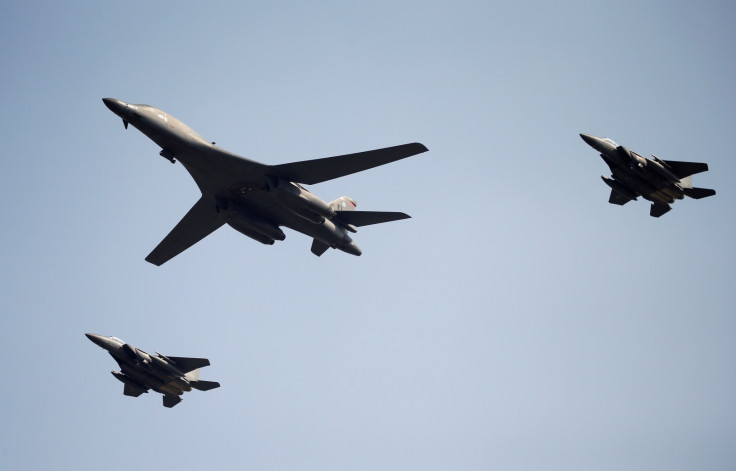US flies two supersonic bombers over South Korea in show of force against North
The two B-1 bombers were joined by South's F-15 fighter jets and flew over South Korea's Osan air base at a low altitude.
On Tuesday morning, (13 September), the US Air Force flew two battle-tested supersonic B-1 Lancer bombers over South Korea in a show of solidarity with its ally, as tensions rose over North Korea's fifth nuclear test on Friday.
In a statement on Tuesday, US Forces Korea commander, Vincent K Brooks said: "North Korea's nuclear test is a dangerous escalation and poses an unacceptable threat. The United States has an unshakable commitment to defend allies in the region and will take necessary steps to do so, including operations like this one today."
The two B-1 bombers were joined by South's F-15 fighter jets and flew over South Korea's Osan air base at a low altitude.
Brooks added, "Today's demonstration provides just one example of the full range of military capabilities in the deep resources of this strong alliance to provide and strengthen extended deterrence."
The supersonic bombers were set to return to Andersen Air Force base in Guam, without landing in South Korea, the Associated Press news agency reported.
The flyover was initially scheduled for Monday but it was delayed due to bad weather conditions in Guam, where the bombers are stationed. According to Yonhap News agency, heavy crosswinds prevented the jets from taking off earlier. Such flyovers are common when high tensions rise over the Korean Peninsula.
Siegfried Hecker, a nuclear expert, who has visited North Korea's nuclear facilities said the North may have enough nuclear fuel for around 20 bombs by the end of 2016 and has the capability to add around seven new bombs a year. Hecker wrote on the North Korea based website 38 North, "Left unchecked, Pyongyang will likely develop the capability to reach the continental United States with a nuclear tipped missile in a decade or so."
On Friday, North Korea conducted its fifth and most powerful nuclear weapons test so far and claimed that the test showed it had a nuclear warhead that could be mounted on a ballistic missile, which increases fears for US allies in the region and threatens US bases in South Korea, Japan and Guam.
South Korea does not have nuclear weapons and relies on Washington's "nuclear umbrella" to deter North Korea. The US also has about 28,000 troops stationed in the South and thousands more in Japan.

© Copyright IBTimes 2025. All rights reserved.





















